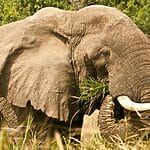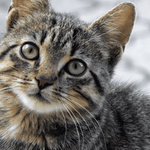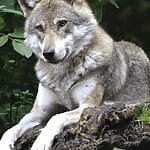While every animal on the planet needs to explore their environment to hunt for food and survive, this isn’t always possible for many of them when the dark winter rolls around and the temperatures start to plummet.
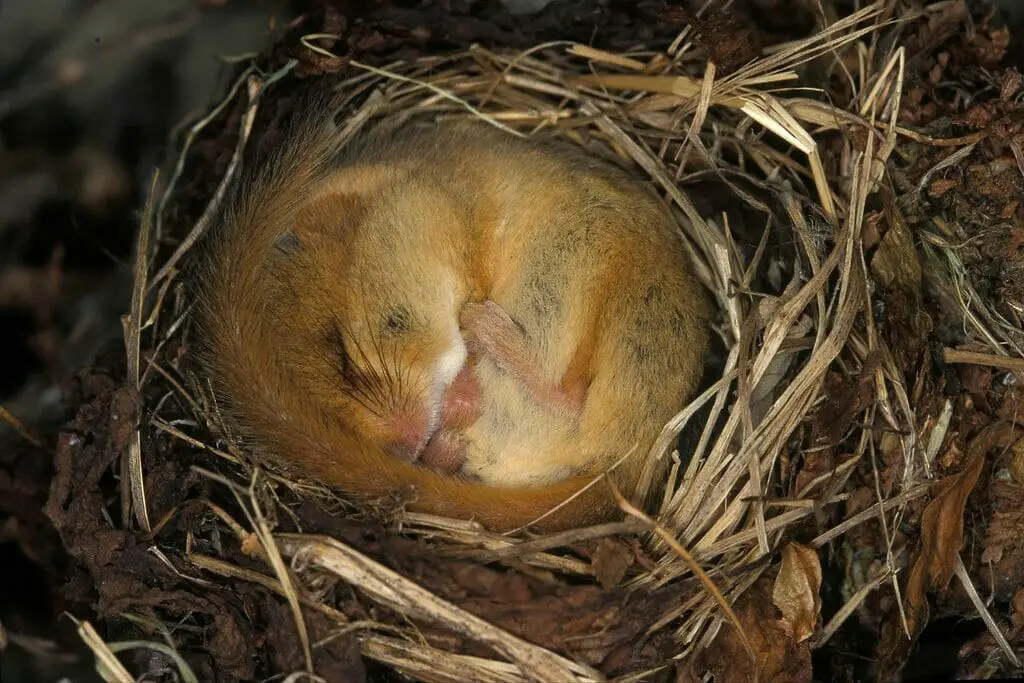
This is why many different species will enter a period of hibernation, a state of greatly reduced metabolic activity where the animal will conserve their energy and adapt its body so that it can eat as little as possible, or in many cases, eat nothing at all.
While hibernation is a well-known concept that is practiced by many different types of species, it’s not always so obvious what specific animals actually do this during the winter since there are many that you may not expect.
Here are a few animals that will escape the cold and save their energy through hibernation during the winter.
Bumblebees
While they are entirely covered in fur and often live with the rest of their colony, bumblebees actually hibernate for quite some time once winter rolls around with some queen bees being known to hibernate for up to nine months when it’s a particularly cold year.
Regular bumblebees will usually start hibernating from mid to late winter and only start venturing outside again in the spring since this is the perfect time for them to pollinate and extract the nectar needed to survive.
The queen will usually dig a small hole under the surface for them to stay in after filling their system up with enough pollen to live off for several months. After the hibernation period, the queen will then create a new colony which any surviving bumblebees will return to.
Snakes
For cold-blooded animals such as snakes, hibernation is called brumation which usually lasts from September or October all the way to March or April.
Rather than being completely inactive, brumation is seen as a state of “sluggishness” where the snake will shut down its body and conserve energy like other hibernating mammals, however unlike hibernation, snakes do not go into a deep sleep during this period and instead, just move around as little as possible.
Snakes still won’t eat anything during this long period which is why they need to make sure they store enough fat to survive until the spring.
Snakes will also still need to move during this brumation period to find water which is why many will brumate as close to a freshwater source as possible.
Hedgehog
When it comes to hibernation, no animal is more prepared than the hedgehog. Hedgehogs will begin making hibernation plans as soon as their food supply starts running out and once they feel the temperatures begin to drop around September.
These small and prickly animals prefer to hibernate in dry and covered areas and will often try multiple different spots before settling on one. Hedgehogs fall into a deep sleep until the spring as their body temperature drops according to the environment and their heart rate slows down, conserving as much energy as possible.
Hedgehogs will be planning their hibernation for several months in advance and will build up as much fat as they can over the summer and fall to live off during hibernation, which is why it’s so dangerous to wake them up during hibernation since they would be forced to use up their limited energy source.
Bats
While they may be known for flying around and hunting prey after the sun falls, bats are actually one of the longer hibernators who will usually enter a deep sleep from October until May when they will become active again.
While hibernation is necessary for bats to survive since they have limited fur to keep them warm, they also do it because the cold weather drives away all the insects and rodents that they would usually feed on.
While they can sometimes prefer to hibernate on their own, bats can commonly be found huddling together in small groups in cool and quiet areas such as caves and abandoned buildings where they will lower their body temperatures and heart rate to adjust to the environment around them.
Land Snail
Land snails are one of several kinds of snails that actually do hibernate and will often cluster together in small groups where they will remain under leaves and rocks until the spring.
Snails actually have a fascinating history with hibernation since they can actually hibernate for years at a time, depending on if they think the temperature is suitable yet for them to come out.
Snails can do this because of a process called estivation, where they will secrete a thick layer of mucus while inside their shell to keep them protected from external conditions and supply them with enough moisture to survive.
Snails have a very strange sleeping schedule and will doze off at random intervals throughout the day, so if you are caring for any land snails and notice that they’ve been sleeping for at least 24 hours, then there’s a very high chance it has started hibernating.
Groundhog
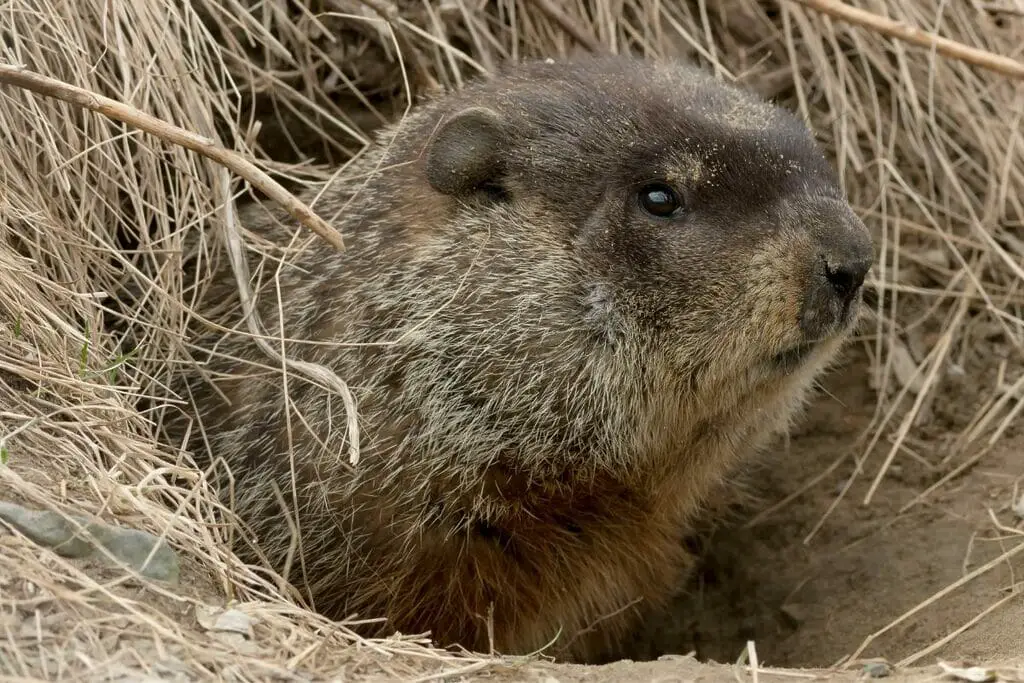
While beavers do not have the biological ability to lay dormant for long periods, groundhogs on the other hand do hibernate by using their deep burrows which they will sometimes dig for months at a time and will then crawl into to enter a deep sleep until February or March, making them true hibernators.
The reason groundhogs will emerge from their warm burrows when it’s still fairly cold outside is so that they can start preparing for the mating season since there can be fierce competition between males once they find a female burrow.
Some groundhogs will even interact with a potential mate before returning to their burrow and sleeping for another month or two, however, it’s always important for the groundhog to mate as early in the year as possible so that their offspring have the best chance of survival once it reaches the chilly winter.
Chipmunks
Chipmunks have a very unique and interesting hibernation period since while they do begin their hibernation in the winter months like a lot of small mammals, they don’t stay asleep for the entire period.
Instead, they wake every few days to raise their body temperatures, feed on any of their stored food, urinate, and defecate.
In this way, chipmunks don’t feed on a stored reserve of fat already in the body, but instead, physically carry food to their burrows, sometimes hoarding up to 8 pounds worth of seeds, nuts, fruits, giants, and even any insects they can get their hands on.
While they do still hibernate, chipmunks are much more resistant to the colder weather than many other animals thanks to their dense fur with recent studies even suggesting that chipmunks in warmer regions have given up on needing to hibernate at all.
Wood Frogs
Wood frogs are another animal with a very peculiar and unique method of hibernating that can’t really be found being utilized by any other creature.
While many animals will be able to naturally lower their heart rate to conserve energy throughout the winter months, wood frogs are able to stop their heart from beating entirely along with their kidneys shutting down and their respiration ceasing for several months.
These frogs have therefore adapted to the winter months not by hiding from it and seeking warm shelter where they can store food, but instead, freezing themselves so that they use essentially no energy while remaining dormant.
This is also the reason why wood frogs will usually hibernate under a nest full of leaves or simply on a forest floor rather than hiding in holes, burrows, or any more secluded areas like a lot of animals.
Black Bears
While all types of bears are known to hibernate as soon as it starts getting chilly, the black bear can hibernate for up to seven and a half months, meaning if they don’t feel the temperatures are warm enough, they can sleep off the majority of the year.
In fact, black bears are one of the only species of bear that are considered true hibernators in the traditional sense of entering a deep sleep in living off fat stored up through the summer since polar bears will simply fast for a few months and panda bears only need to move to higher and lower elevations depending on the temperatures.
Since many types of bears do not technically hibernate, it was uncertain for many years if specific types like the black bear could do it since their body temperatures could only drop 3 to 5 degrees Celsius, however despite this, black bears do still go through a phase of excessive eating called hyperphagia that gives them the required fat they need to survive when entering their hibernation period.
Summary
There are many unique and interesting hibernation techniques animals will use to keep themselves alive when the temperatures start to drop.
From bats and chipmunks all the way to bumblebees, there are plenty of creatures in the animal kingdom that take a significant break from hunting food when the winter months roll (see also: Animals That Roll Into A Ball)around.

